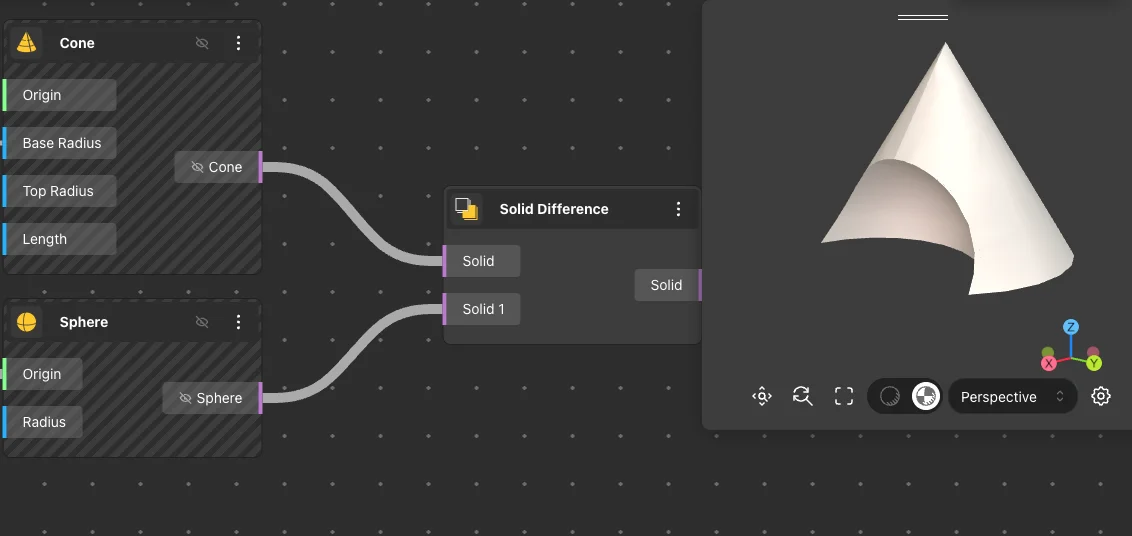Familiarization with nodes implementing Boolean operations on regions.
Region Union
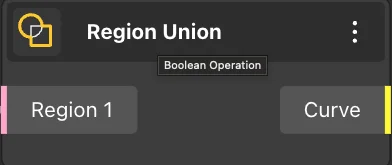
The Region Union node returns the curves received by the input nodes joined together. Additionally, the Region Union node has the ability to accommodate additional input nodes. Curves are connected to the input ports of the Region Union node.
Add Port

Node usages

Region Intersection
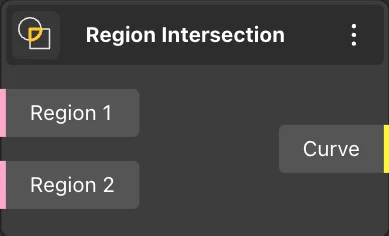
The Region Intersection node returns a curve obtained from the intersecting segments of the curves received by the input nodes. Additionally, the Region Intersection node can accommodate additional input nodes, requiring a minimum of two nodes. Curves are connected to the input ports of the Region Intersection node.
Node usages

Region Difference
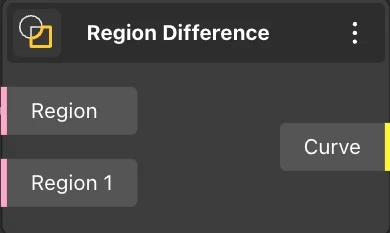
The Region Difference node returns a curve obtained by subtracting the curves received from the other nodes from the curve received from the first input node. Additionally, the Region Difference node can accommodate additional input nodes, requiring a minimum of two nodes. Curves are connected to the input ports of the Region Difference node.
Node usages
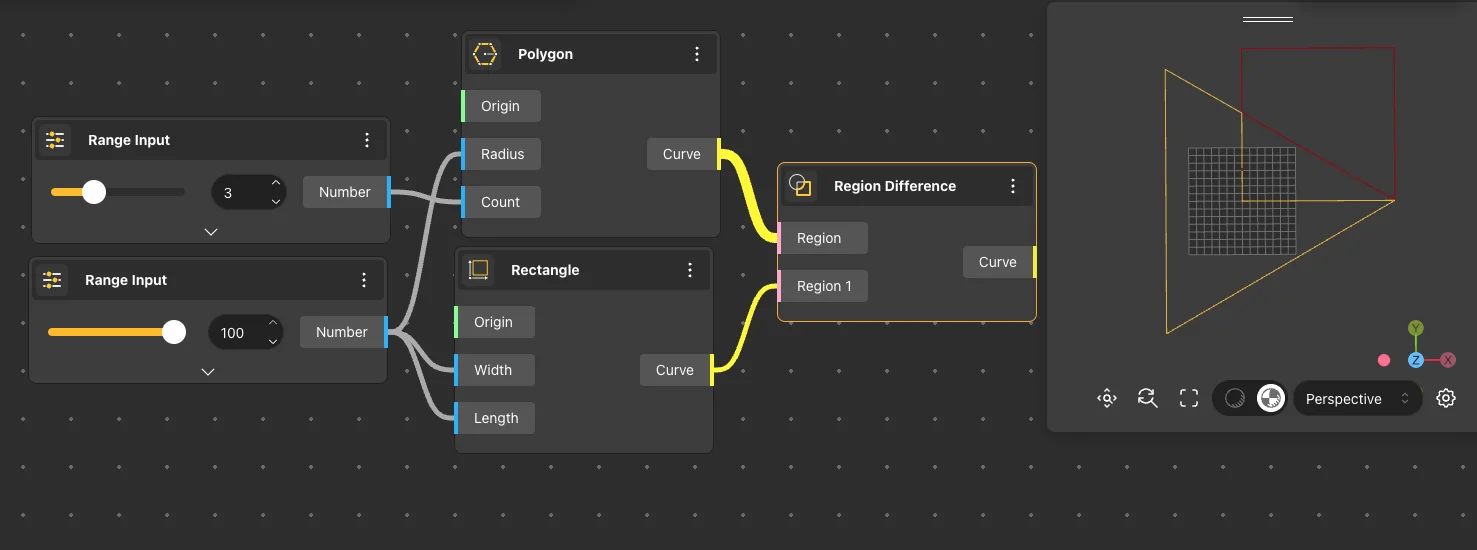
Familiarization with nodes implementing Boolean operations on surfaces.
Surface Union
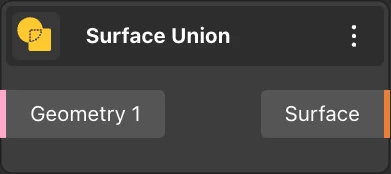
The Surface Union node returns the surfaces obtained by joining together the input ports. Additionally, the Surface Union node can accommodate additional input ports. Surfaces are connected to the input ports of the Surface Union node.
Add Port

Node usages

Surface Intersection
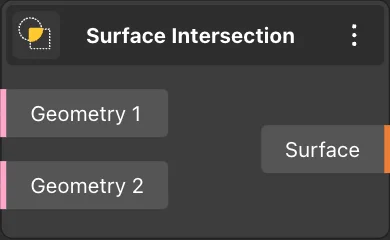
The Surface Intersection node returns a surface obtained from the common intersection of the surfaces received from the input ports. Additionally, the Surface Intersection node can accommodate additional input ports, requiring a minimum of two ports. Surfaces are connected to the input ports of the Surface Intersection node.
Node usages
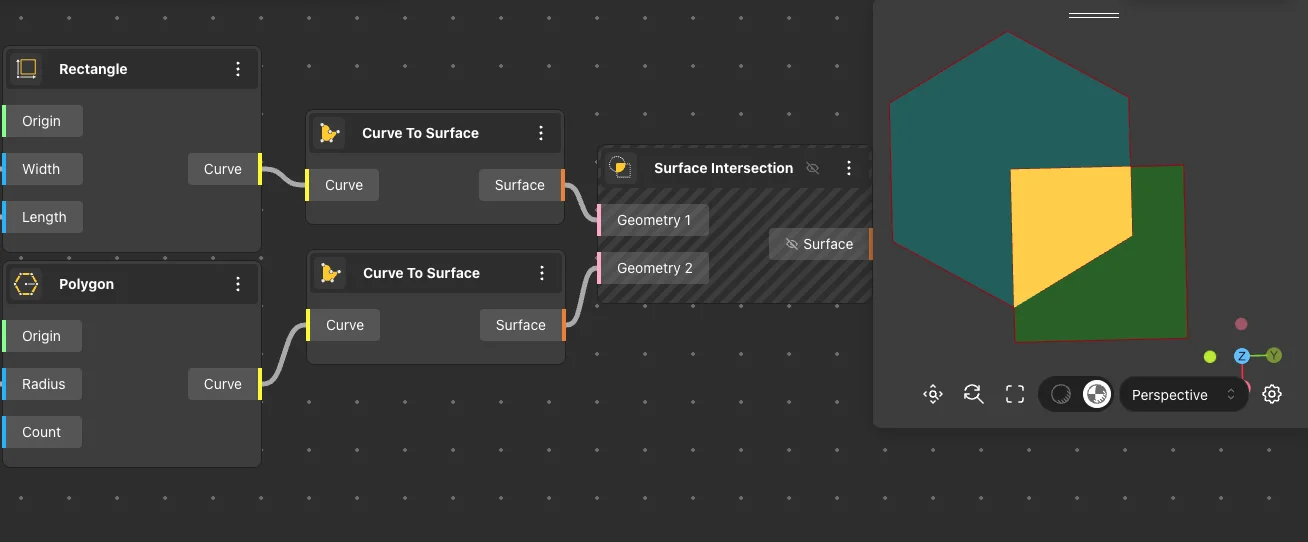
Surface Difference
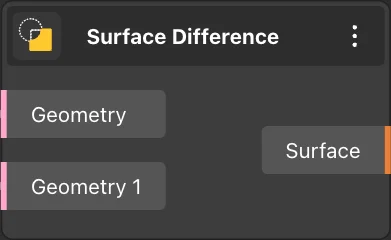
The Surface Difference node returns a surface obtained by subtracting the surfaces received from the other ports from the surface received from the first input port. Additionally, the Surface Difference node can accommodate additional input ports, requiring a minimum of two ports. Surfaces are connected to the input ports of the Surface Difference node.
Node usages
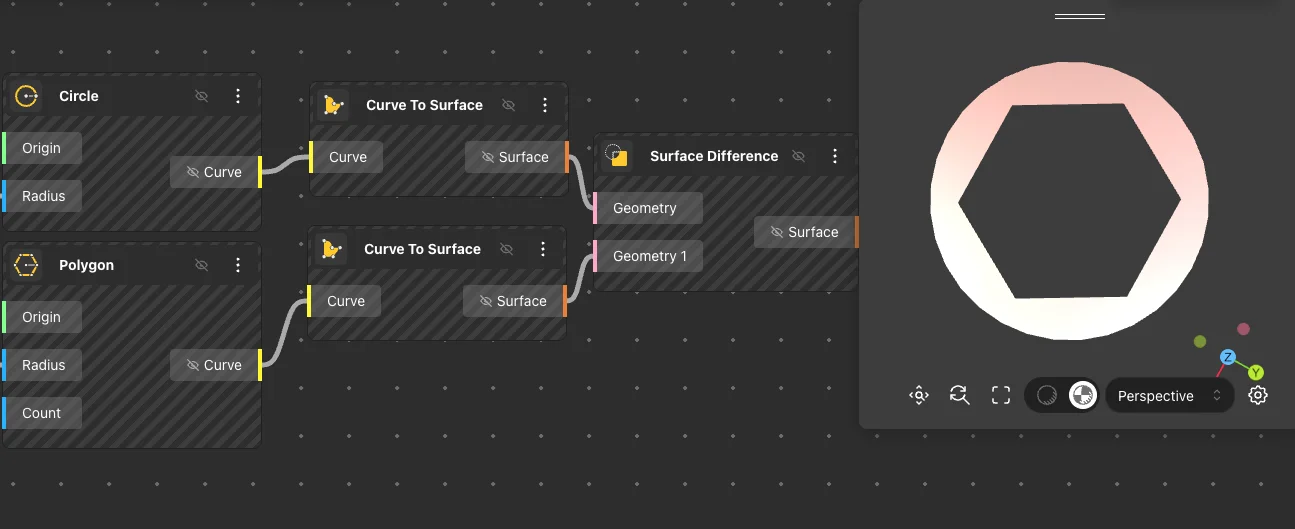
Familiarization with nodes implementing Boolean operations on solids.
Solid Union
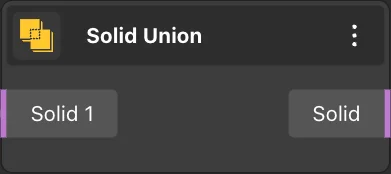
The Solid Union node returns the solids obtained by joining together the solids received from the input ports. Additionally, a Solid Union node can accommodate additional input ports. Solids are connected to the input ports of the Solid Union node.
Add Port

Node usages
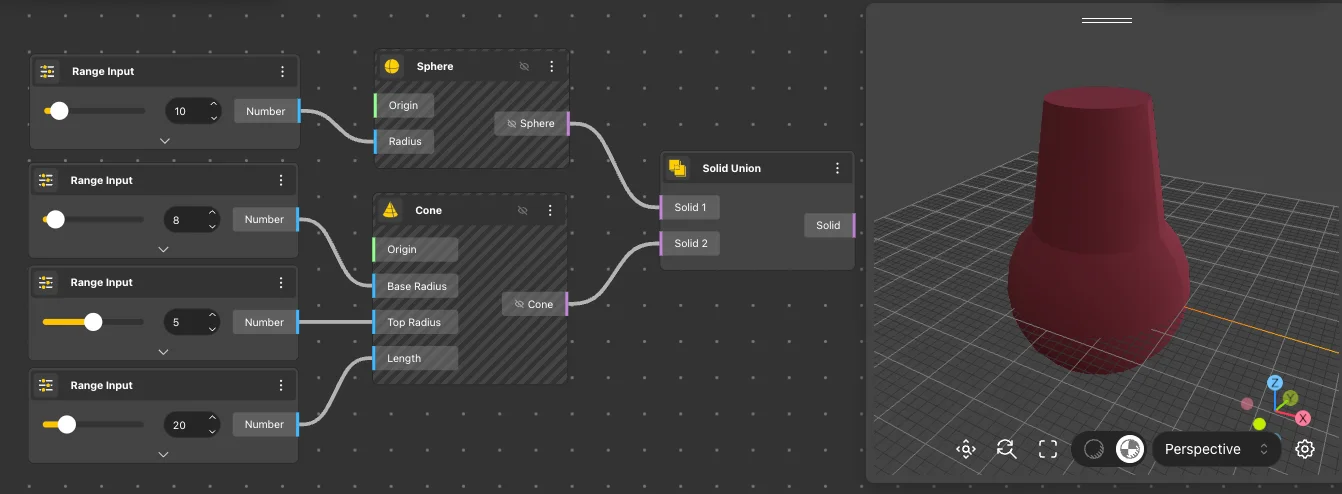
Solid Intersection

The Solid Intersection node returns a solid obtained from the intersection of the solids received from the input ports. Additionally, the Solid Intersection node can accommodate additional input ports, requiring a minimum of two ports. Solids are connected to the input ports of the Solid Intersection node.
Node usages

Solid Difference

The Solid Difference node returns a solid obtained by subtracting the solids received from the other ports from the solid received from the first input port. Additionally, the Solid Difference node can accommodate additional input ports, requiring a minimum of two ports. Solids are connected to the input ports of the Solid Difference node.
Node usages
